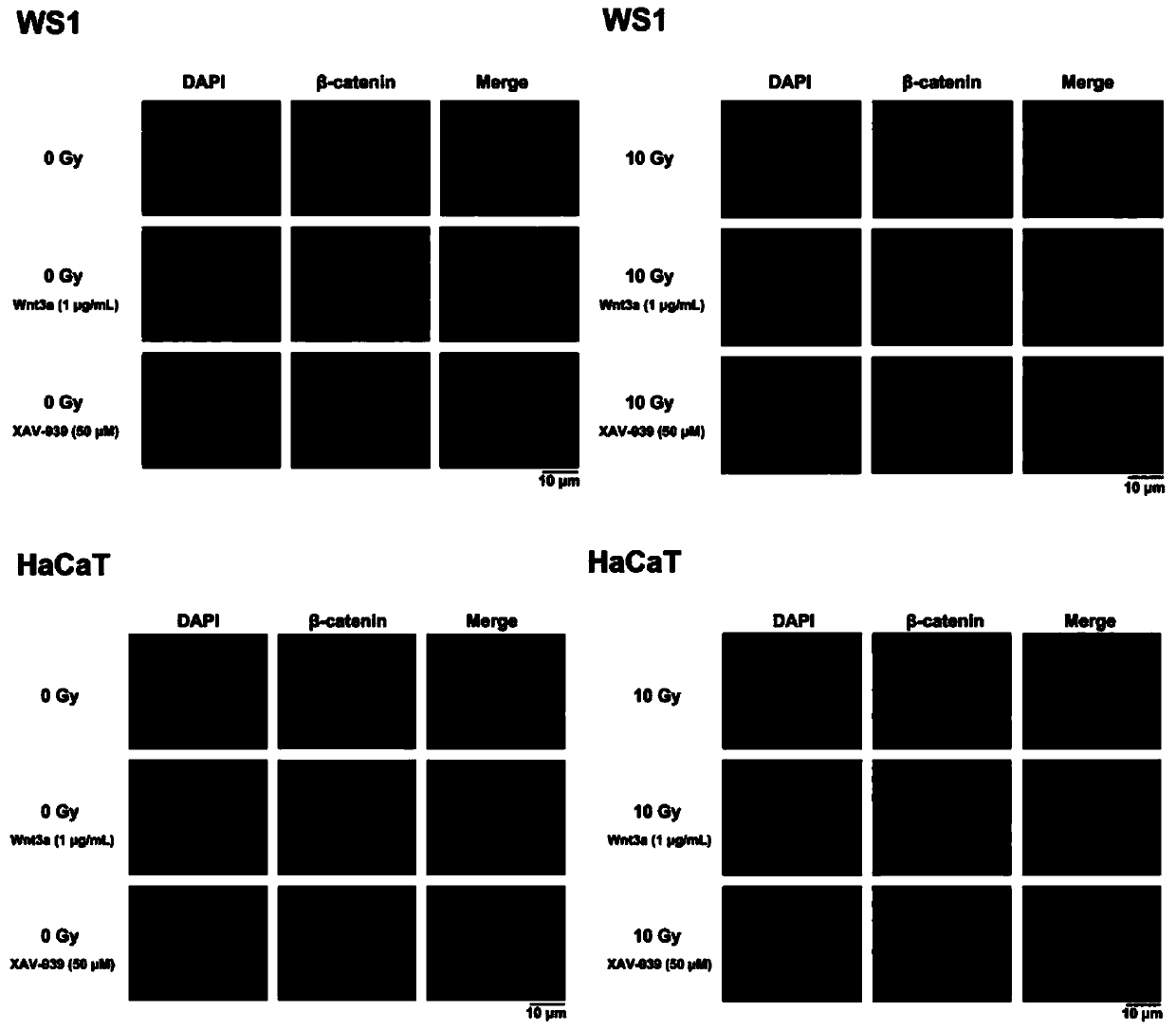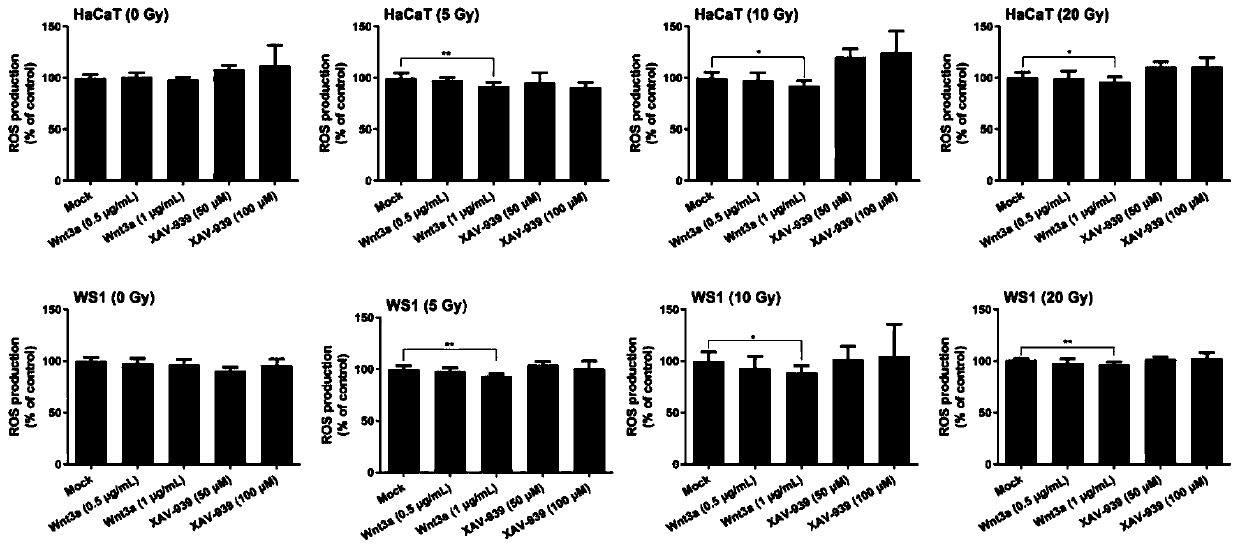Radiation-induced skin injury control medicine
A technology of radioactive skin and drugs, applied in skin diseases, drug combinations, pharmaceutical formulations, etc., to achieve the effects of accelerating healing, promoting migration, promoting cell proliferation and tissue regeneration
- Summary
- Abstract
- Description
- Claims
- Application Information
AI Technical Summary
Problems solved by technology
Method used
Image
Examples
Embodiment 1
[0028] Example 1 Activation of skin cell WS1 by Wnt3a, verification of β-catenin signal transduction pathway in HaCaT
[0029] Human skin fibroblasts WS1 in exponential growth phase and human immortalized epithelial keratinocytes HaCaT were inoculated on a glass-bottomed cell culture dish, and the cells were irradiated with X-rays after the cells adhered to the wall, and Wnt3a protein (1 μg / mL ) and β-catenin pathway inhibitor XAV-939 (50 μmol / L), at 37°C, 5% CO 2 Continue culturing for 24 h in the incubator. The fluorescence intensity and localization of β-catenin in cells were observed by confocal microscope. Such as figure 1 As shown, the results showed that: in WS1 and HaCaT cells, Wnt3a significantly enhanced the fluorescence intensity of β-catenin in the cells, and made the accumulation of β-catenin into the nucleus. Wnt3a can activate the β-catenin signal transduction pathway in skin cells.
Embodiment 2
[0030] Example 2 The experiment of activating the β-catenin signal transduction pathway to reduce the free radicals caused by radiation
[0031] Human skin fibroblasts WS1 in the exponential growth phase and human immortalized epithelial keratinocytes HaCaT were inoculated in 96-well plates, and the absorbed doses of 0, 5, 10, and 20 Gy X-rays were irradiated after the cells adhered to the wall. Then add Wnt3a and XAV-939, at 37°C, 5% CO 2 Continue culturing for 24 h in the incubator. Each group had 4 parallel samples, and the experiment was repeated 3 times. Aspirate the medium, add 1 mL of diluted DCFH-DA to each well (dilute DCFH-DA with serum-free medium according to 1:1000, so that the final concentration is 10 μmol / L), and incubate in the incubator for 20 min. Wash three times with serum-free medium to fully remove DCFH-DA that did not enter the cells. Detection by microplate reader. Such as figure 2As shown, the results showed that: Wnt3a activated β-catenin signa...
Embodiment 3
[0032] Example 3 Activating the β-catenin signal transduction pathway to inhibit the apoptosis of skin cells by ionizing radiation
[0033] Human skin fibroblasts WS1 in exponential growth phase and human immortalized epithelial keratinocytes HaCaT were inoculated in 6-well plates. After the cells adhered to the wall, they were irradiated with different absorbed doses of X-rays, and then Wnt3a and XAV were added. -939 at 37°C, 5% CO 2 Continue culturing for 24 h in the incubator. Three parallel samples were set up in each group, and the experiment was repeated 3 times. Cells were collected, half life and death were set, stained with 7AAD and PE, and the apoptosis rate of the two cells was detected by flow cytometry. Such as image 3 As shown, the results showed that: Wnt3a activated β-catenin signal transduction pathway can significantly inhibit the apoptosis of skin cells induced by ionizing radiation.
PUM
 Login to View More
Login to View More Abstract
Description
Claims
Application Information
 Login to View More
Login to View More - R&D
- Intellectual Property
- Life Sciences
- Materials
- Tech Scout
- Unparalleled Data Quality
- Higher Quality Content
- 60% Fewer Hallucinations
Browse by: Latest US Patents, China's latest patents, Technical Efficacy Thesaurus, Application Domain, Technology Topic, Popular Technical Reports.
© 2025 PatSnap. All rights reserved.Legal|Privacy policy|Modern Slavery Act Transparency Statement|Sitemap|About US| Contact US: help@patsnap.com



